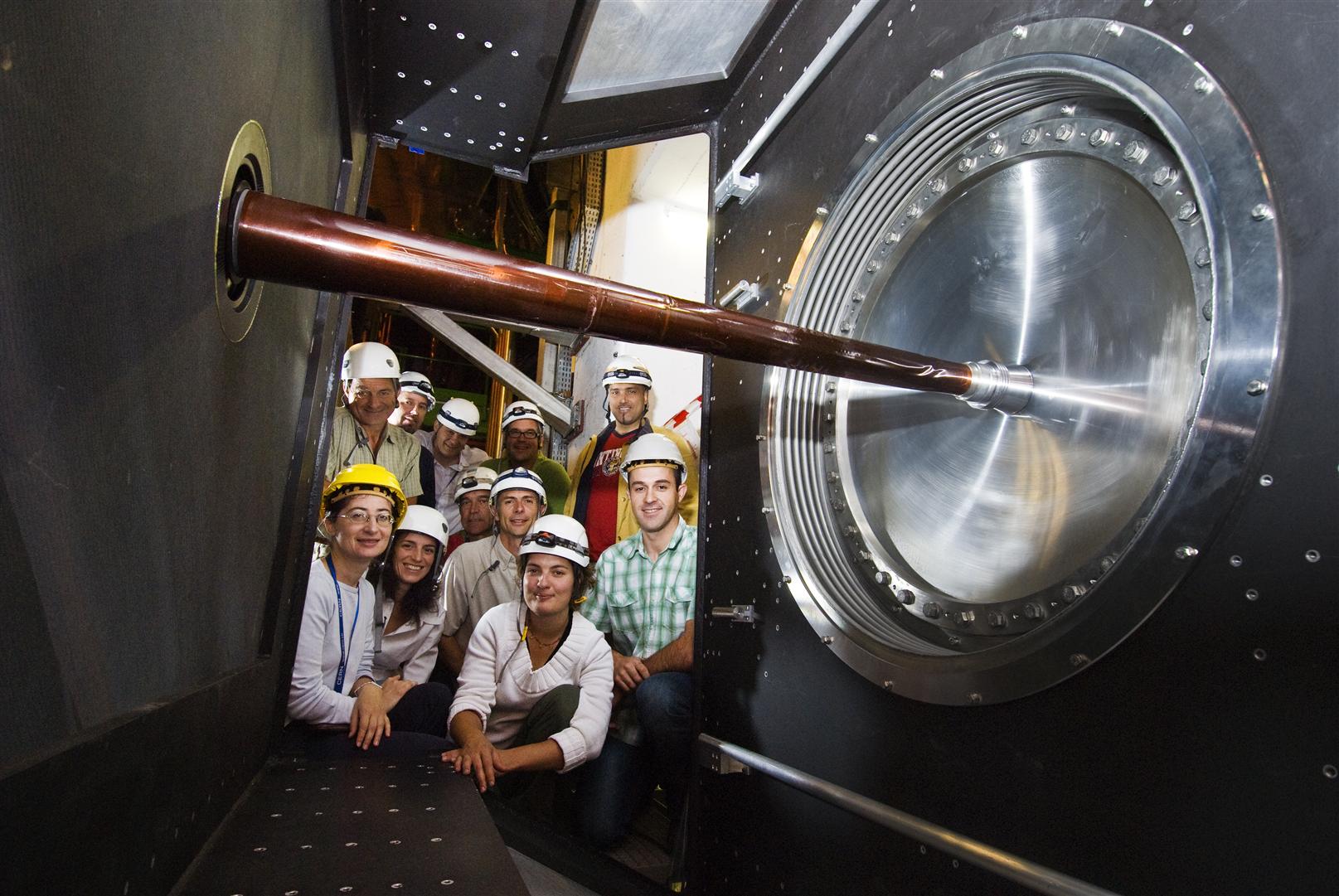LHCb celebrates completion of its beam pipe
Members of the LHCb collaboration and of the AT and TS Departments are ready to pop open the champagne bottles and celebrate the complete installation and commissioning of the LHCb experiment’s beam pipe.
All four sections of LHCb’s beam pipe have been installed, interconnected, pumped down and baked out.. Three of the conical tubes are made of beryllium in order to minimize the level of background in the experiment, while the fourth and largest section is composed of stainless steel. The first of the beryllium sections, an important connection to the Vertex Locator vacuum vessel (VELO) was installed in August 2006 (see Bulletin No. 37/2006).
One of the more challenging tasks was the installation of the longest (6 m) piece of beryllium beam pipe through the 2.4 m long RICH2 detector in January 2006. Delio Ramos, an engineer in the AT-VAC Group, explained, "Temporary rails were installed at both sides of RICH2 to allow the beam pipe to gently slide through its inner tube with just a 4 cm leeway. Optimised stretched wire structures, designed to support the beam pipe, were installed and precisely aligned with the beam line before the delicate beam pipe was installed to prevent any unnecessary movement and avoid damaging it."
In February the stainless-steel section was positioned in the middle of the iron walls of the muon system with the use of a crane to lift the 160 kg piece onto supports that aligned it with the beam line. The final 4 m long section of beryllium was installed into the dipole magnet using wire supports to position and align it with the beam line. After all the installations were complete, the beam-pipe sections were interconnected with bellows and leak tests were performed.
In addition, the installation of the neon gas injection system has been completed. This is crucial in preserving the properties of the non-evaporable getter (NEG) coating after the bake-out is finished and also allows the vacuum to be brought back to atmospheric pressure. "As the beam pipes are fragile, we decided not to do dangerous operations under vacuum," said Adriana Rossi, a physicist in the AT-VAC Group. "Even the slightest additional pressure could break the thin walls of the beryllium pipe; this is why bringing it to atmospheric pressure is important." A test of the neon gas injection system was done to check the interaction with the VELO’s pressure control system.
The bake-out equipment has also been installed. "Before the bake-out takes place, heating blankets are tucked around the length of the beam pipe, which bring it to the desired temperature. This is a temporary covering, except for the area around the stainless-steel section where it is not easily accessible and its presence has little influence on the level of background", explained Gloria Corti, a physicist in the PH-LBD group.
The next step was to pump down the beam pipe, reaching a pressure of the order of 10-7 mbar. During the bake-out and NEG activation phase, the VELO was heated to 150°C and the NEG reached 220°C in order to obtain ultra-high vacuum inside the beam pipe. Once the bake-out was complete the pressure had gone to 10-11 mbar. As a last step, the beam pipe was filled with ultra-pure neon to atmospheric pressure. When all the detectors are ready and the LHC starts up, the LHCb collaboration will just need to pump down the neon gas in the beam pipe to bring it back to a high vacuum.
Currently the beam pipe looks as though it is on display at a modern art museum. The exposed sections are surrounded by a box of plexiglass to remind those working around it of its delicate properties and protect it from any mishaps.
LHCb is the second of the four major LHC experiments to have a fully commissioned beam pipe (The ALICE experiment was the first experiment to finish its beam pipe – see Bulletin No. 20/2007) and it uses the largest amount of beryllium material. The focus of the experiment is on the precision measurement of CP violation and rare decays of b quarks.


